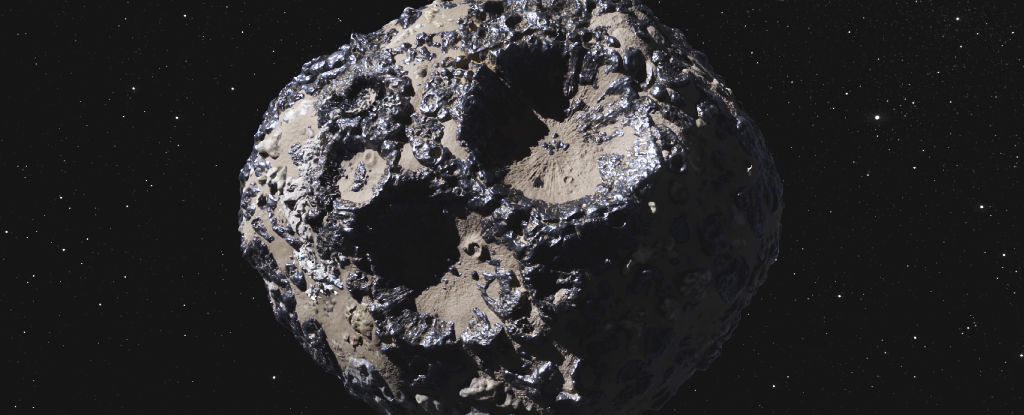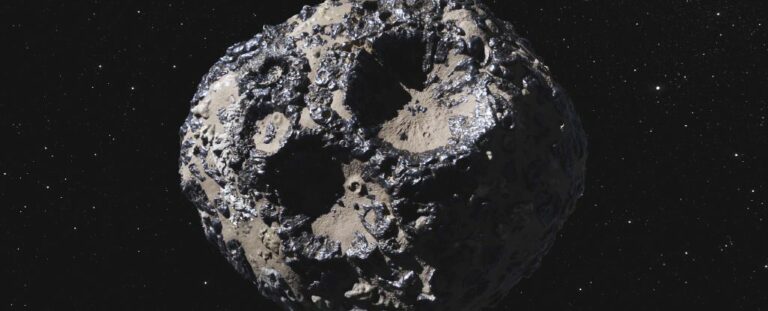Hidden Beyond the Periodic Table: Asteroids Could Harbor Unprecedented Elements
The metal osmium is known to be the densest naturally occurring element on the periodic table. It has a solid density of 22.59 grams per cubic centimeter at room temperature, which is significantly higher than both Earth’s inner core and the core of Jupiter.However, there are certain objects in the Solar System that appear to be even denser than osmium. Surprisingly, these objects are not planetary cores but rather asteroids. Despite lacking the mass required to compress minerals into an ultradense state, these asteroids exhibit higher densities.
This intriguing observation has led scientists to speculate about the existence of stable elements beyond the periodic table. These elements would go beyond the range of unstable, radioactive superheavy elements with atomic numbers between 105 and 118, which have only been observed in laboratory settings.It remains uncertain whether elements with more than 118 protons would be stable, as they have never been observed in either natural or laboratory environments. However, theoretical studies suggest the possibility of an “island of stability” around atomic number 164. In this hypothetical region, superheavy elements may exhibit reduced susceptibility to radioactive decay and could persist for a certain period of time.
The presence of these heavier elements, which are expected to be denser, could potentially explain peculiar observations related to the asteroid 33 Polyhymnia. This asteroid, located in the asteroid belt, has dimensions of approximately 50 to 60 kilometers (around 30 to 36 miles). Measurements have indicated a density of 75.28 grams per cubic centimeter for 33 Polyhymnia, classifying it as a potential compact ultradense object (CUDO).However, it is important to note that such an extreme outlier is likely the result of an erroneous measurement. Even the astronomer who conducted the calculation acknowledged its unrealistic nature.

However, the physicists from the University of Arizona, Evan LaForge, Will Price, and Johann Rafelski, aimed to investigate the plausibility of such a density. To do so, they utilized the Thomas-Fermi model, a basic approximation of atomic behaviors, despite its limitations. This model allowed them to explore the atomic structure of hypothetical superheavy elements beyond the known periodic table.
Rafelski explains, “We selected this model because it permits the systematic examination of atomic behavior as atomic number increases, going beyond what is currently known.”Another advantage of this model was its ability to analyze numerous atoms within a short timeframe, thanks to the contribution of their talented undergraduate student, Evan LaForge.
Their calculations aligned with the predicted island of stability, which was anticipated to exist at atomic number 164. Furthermore, they determined that the density range for this element falls between 36 and 68.4 grams per cubic centimeter, closely resembling the high density calculation for 33 Polyhymnia.
It should be noted that the ultradensity of 33 Polyhymnia is not necessarily indicative of it being ultradense. Rather, there may be an alternative explanation for this measurement of ultradensity that does not involve resorting to unknown matter.According to the researchers’ paper, the objective of their study was to investigate whether extreme mass density in CUDOs could be achieved without relying on strange or dark matter, which are typically invoked for such cases.
Using the relativistic Thomas-Fermi model, the researchers explored two different nuclear systems. Their findings indicate that both standard nuclei and alpha matter could account for the observed density in CUDOs like asteroid 33 Polyhymnia.The researchers assert that their work demonstrates the effectiveness of the Thomas-Fermi model in examining the properties of hypothetical superheavy elements. Furthermore, it lays the foundation for more comprehensive analyses in this field.
This research has been published in The European Physical Journal Plus.
This article is republished from sciencealert under a Creative Commons license. Read the original article.
Do not forget to share your opinion with us to provide you with the best posts !




0 Comments